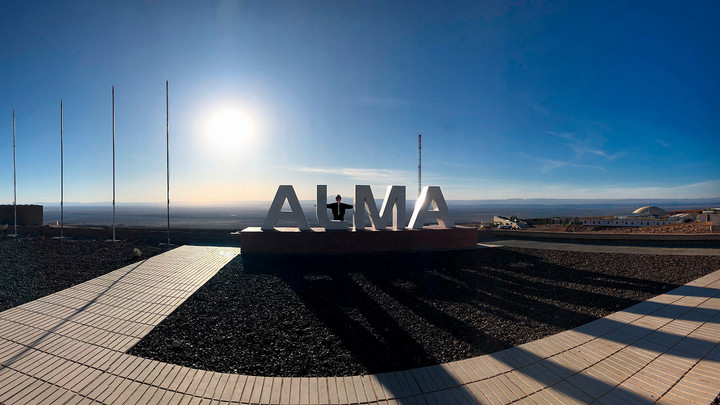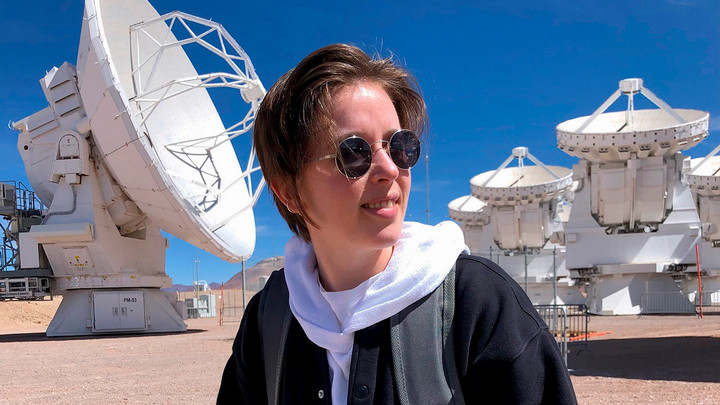UVic PhD candidate reorients our view of planet formation
September 04, 2024

During Jess Speedie’s first year at university, someone told her, “We owe everything on Earth to the rotating disk of gas and dust that existed around our sun when it was young. From this came all the diversity we have on Earth.”
Now a PhD candidate in astronomy at UVic, Speedie is delving into the disk around a different star and she’s providing visual proof, for the first time, of a planet being formed in a new-to-us way. “The canonical theory has long been that planets are grown ‘from the ground up,’ from dust particles growing into dust-bunnies, eventually growing into planets,” Speedie says. “But there’s another theory that planets can also be formed ‘from the top down:’ if the disk is massive enough, it becomes gravitationally unstable. Vast spiral arms form that then fragment into giant clumps which collapse into planets.”

Speedie has sifted through a huge set of observations from the Atacama Large Millimeter Array (ALMA) radio telescope in Chile that mapped the disk around a bright young star called AB Aurigae. She and an international team of astronomers chose AB Aurigae because researchers have suspected for twenty years that the disk around this star is gravitationally unstable and could be their best chance to observe planets forming in this way.
“It’s a classic science story,” Speedie says. “Our collaborator Dr. Cassandra Hall of the University of Georgia laid the groundwork with her simulations. She predicted what we’d see if the disk is gravitationally unstable. We pointed ALMA at AB Aurigae, and observed exactly what her simulations predicted.”
In “Gravitational instability in a planet-forming disk,” published in Nature on Sept. 5, Speedie and her colleagues explain in detail their methodology and of course it wasn’t as simple as looking at a few images and pointing to this revelation.
“ALMA’s sensitivity and high-velocity resolution enabled us to probe the motion of the gas deep within the AB Aurigae disk,” Speedie explains. “We sliced and diced the data to comprehensively expose and quantify the pattern of motion we were seeing.”
What they were looking for was wave-like “wiggles” in the gas velocity field, indicating the disk is gravitationally unstable and planet formation is unfolding.
As a PhD student amongst a dozen prominent international astronomers, including her supervisor, UVic’s Ruobing Dong, and with support from the National Radio Astronomy Observatory, Speedie had the chance to work the data. And work it she did.
“There are many ways to extract a kinematic signal from this kind of data,” she says. “The new thing that I brought to this project is to expose the velocity structure by slicing the ALMA data cube along a certain axis of the disk. Along this axis, we could isolate what we wanted to see and it made the match to Dr. Hall’s simulations crystal clear.”
Her innovation and attention to detail allowed scientists to observe, for the first time, an example of a disk where this pathway to planet formation was actually taking place.
“In research, we have the freedom— or duty— to turn over all the rocks,” Speedie says. “That’s the process of knowledge building and how we push the boundaries forward.”
Rachel Goldsworthy
